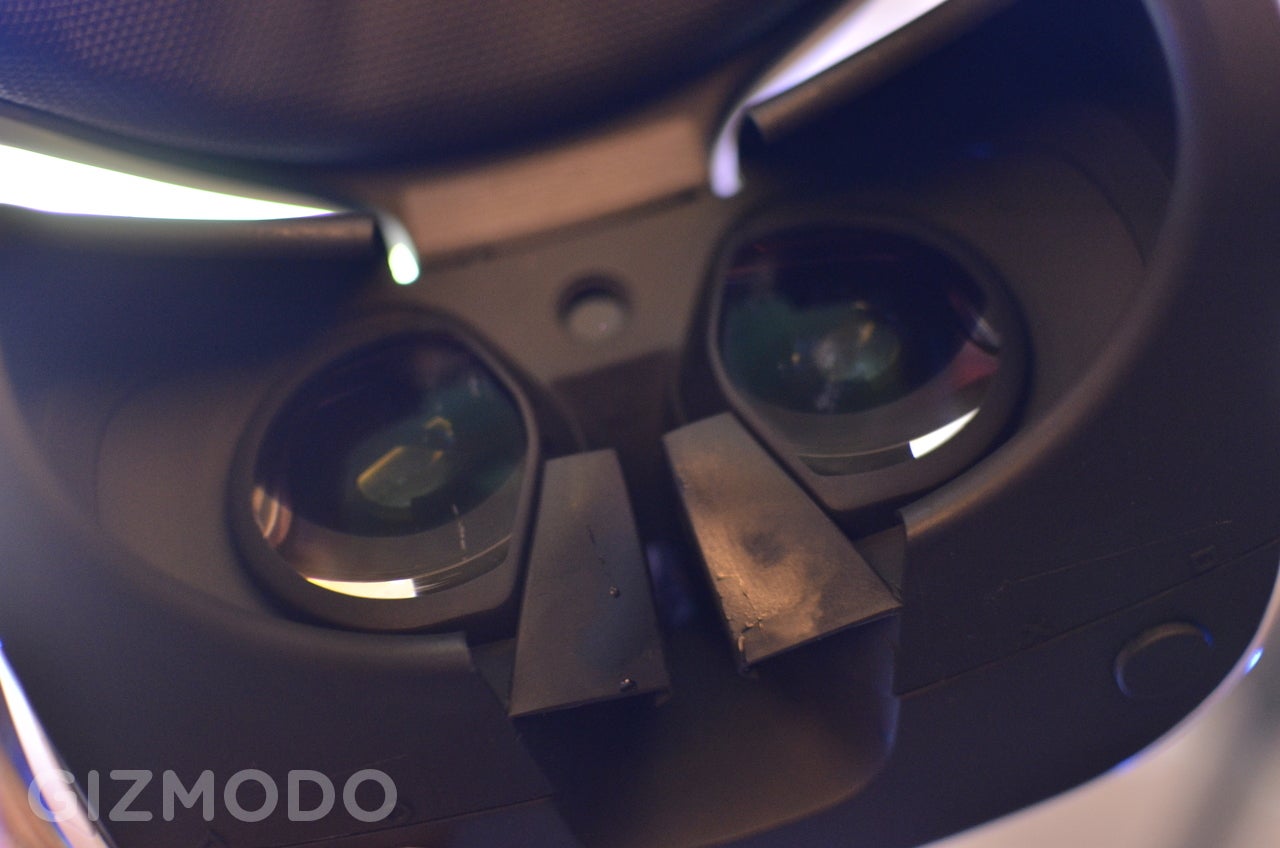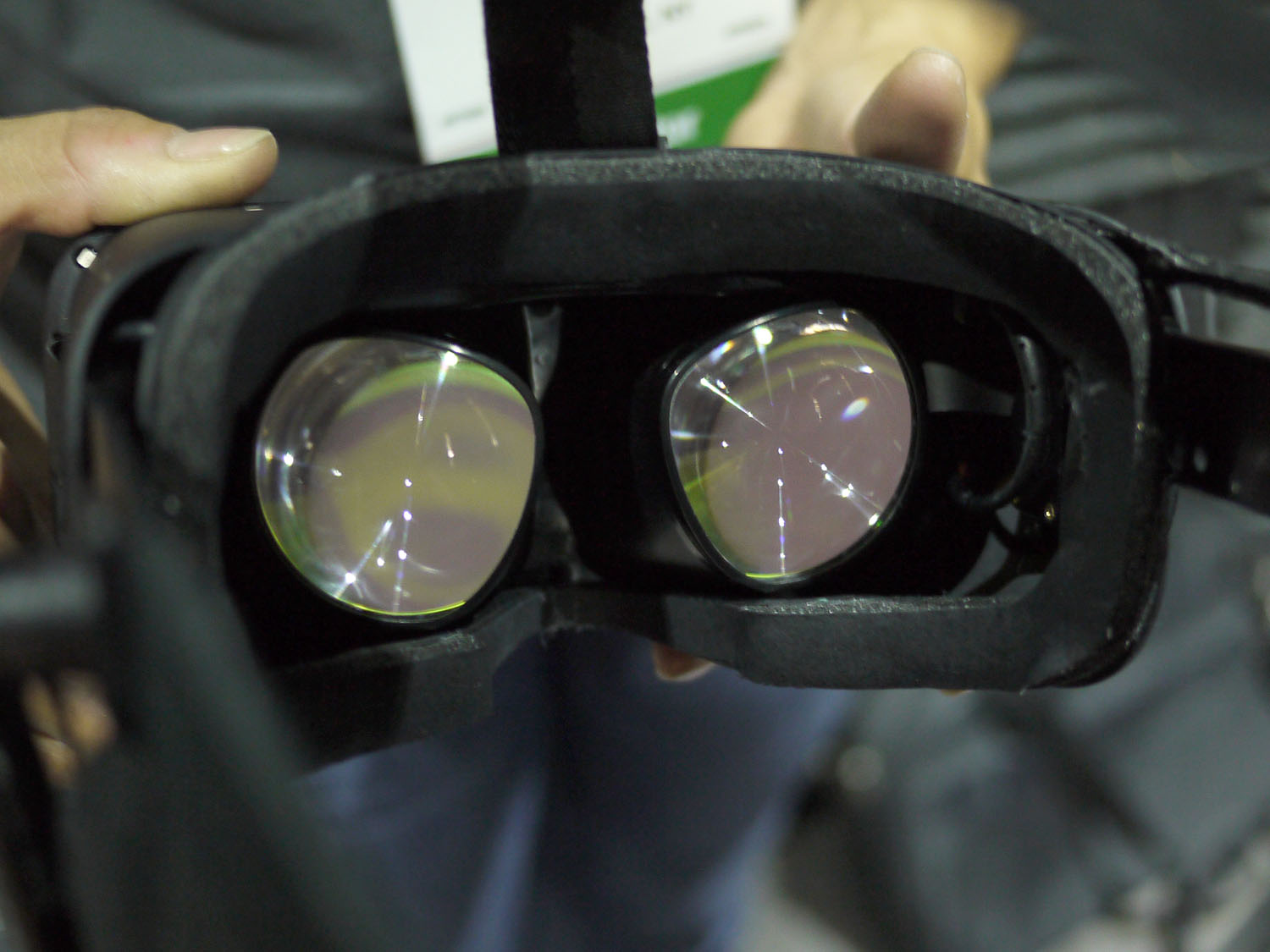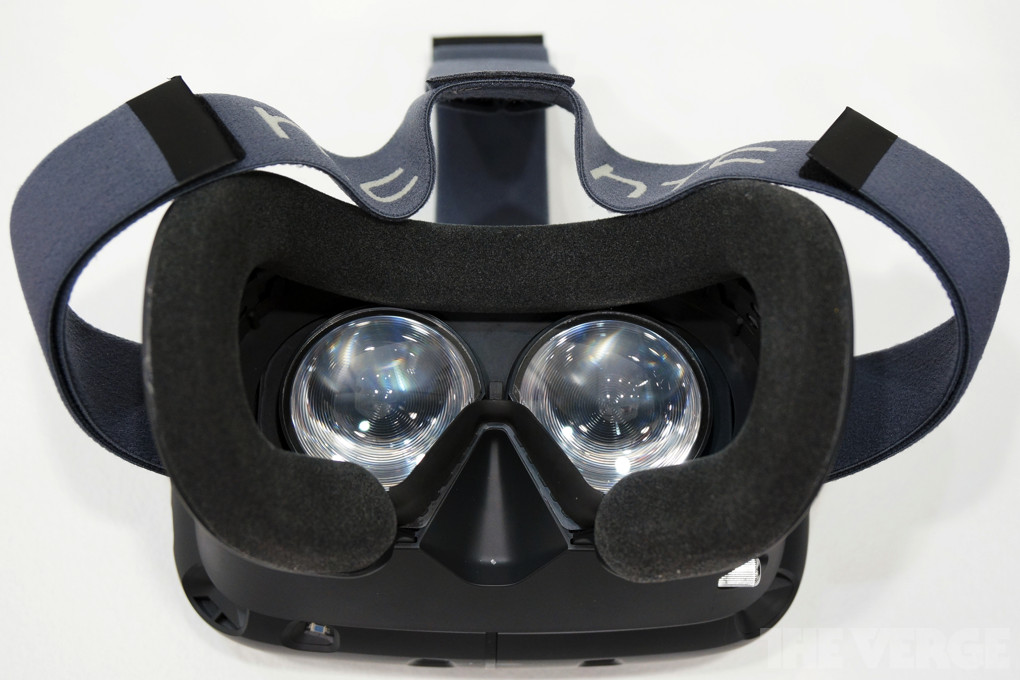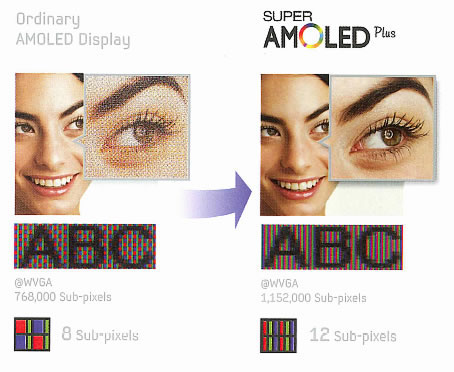Love_In_Rio
Veteran
For the optics.I believe optics will be in the end the most diferenciative piece of hardware in these VR headsets.
Follow along with the video below to see how to install our site as a web app on your home screen.
Note: This feature may not be available in some browsers.
From the close-up images, It looks like either the fresnel rumor was false, or the fresnel pitch is extremely fine on both Morpheus and Oculus.
The only VR that clearly shows fresnel lines is the Vive.
Occulus have a lot of radial flaring and CA from the outside, I would believe this could be a very fine fresnel, or coarse diffractive optics?
Morpheus looks like it might have an AR coating? Or it's just the lighting playing tricks on me?
Morpheus:

Latest occulus:

Valve Vive:

Firstly, Minolta having the best engineers in the field is debatable. I don't think their lenses will be inherently superior to alternatives. Secondly, the info I can find suggests Sony closed its DSLR lens factory in 2012. I'm not sure they're making any lenses!Well,no need to fab their on lenses.The important thing is Minolta has the best engineers in the field.
It's going to be a single element for sure. Weight and cost needs to be kept down. Plastic's good enough for spectacles.VR eye piece seems to be extremely simple optical design in comparison to whatever Sony would get from their close partnership from Zeiss, or their own Konica-Minolta for high-end camera lenses.
One major advantage with the computer images is the option to adjust for image artefacts in the post processing (reverse of lens fault correction in photographs where the lens faults are corrected digitally), so the lens's flaws can be used to correct a deliberately defective output into a perfect image. Maybe that's what all the CA in current games is for...It's probably just molded plastic lenses, so there's no production difficulty. The mystery seems to be who used something "fancy", and I'm still trying to figure it out.... There's a lot of rumors going around. I want something fancy because it becomes fun. Standard design is boring.
I can't see any point of Sony launching it without any games to play. Lack of software is likely the holdup. And this is good because they'll get so much more feedback when devs use the unit during development that's it's a chance to work out any last kinks before the consumer unit goes into mass production.is sony simply want more games to be ready and ramping up mass production as the sony vr boss person guy told the interviewer? while valve more like "get this out ASAP so people can develop for it".
A cluster of laser emitters and a truck-load of photoreceptors dotted all over the headset and wands isn't what I'd call elegant. Morpheus has a single unit camera sensor and a few LEDs which also look quite cool. The mathematical solution for Vive's triangulation is perhaps more elegant, but the data acquisition and hardware isn't.
I don't know any households where the wall-plugs aren't out-of-site, typically behind furniture, often with a multiple point adaptor on the end to attach all the necessary electronics. In an ideal case where you have a couple of wall sockets free and no furniture in the way, great. But for ordinary folk, Vive would likely require considerable room rearranging for an experience mostly achieved by Morpheus and a less ridiculous looking glowing wand.
Move came in for a lot of grief on its design, but they look like Red Dot design winners next to Vive's positively medieval maces!
Vive controllers are not very pleasing to the eye, but this is not their final form. I'm not sure if the form can change drastically, tbh though, I'm not sure it's very important.
It seems that they are working as intended, and that is what matters most.
Granted, I have not used the move on a PS4, and have no idea if they tackled the issues the PS3 had with them, namely the fact that they were inaccurate after minutes of playing and required constant calibration.
My guess is, that the first applications will be of a sited experience, and valves solution will still be better than the rest, mostly because of lower latency.
I don't think it's the key hold up. Richard M was very clear in that they're ready with the hardware specs and final form, but the hardware team still has to do their 'end-consumer' magic. It's clear that they are trying hard to get this right, and are taking their time to get it right. Because in the end, it's the games that will have to sell it. I get the impression that if they think they can launch in or before Q2 2016, then they will show some games that are further along at this year's E3.
What I am most excited about is the things I've seen that will enhance existing games, even those that I wasn't sold on initially. The way they can use the DualShock 4 in a VR environment is very interesting. I saw a lot of cool and innovate things like slotting in the controller to then take direct control of all sorts of things, but for some reason, the idea of playing a 3D platformer in VR with the camera automatically following the character that you run around with from top-down perhaps got me excited the most. Perhaps not justifiably so, but the idea that older games could be ported to this relatively easily just really appealed to me - play Jak & Daxter in VR for instance could be really cool.
current gen seems so refreshing on management level. They casually call out each other competitor brands, tech, and praise each other. Not like on those ps1, ps2 and ps3 era *shudder* when ecerybody attacks everybody.
btw about movement... does "hold X" to move where you are facing feels disorienting in VR? if its okay, then it can be combined with the "180 degree flip" that was mendioned in that interviewe.
http://www.reddit.com/r/oculus/comments/2yad4l/the_big_3_a_comparison_of_htc_valve_vive_oculus/Overall the image quality of Morpheus was very different from Vive and Crescent Bay, and very pleasant in its own way.
This flatness and clarity gave me a good look at the pixel structure which appears to be RGB stripe. Surprisingly, the pixels were LESS noticeable when compared with Vive! 1920x1080 against 2160x1200, with 20% fewer pixels, Sony seems to use a different pixel distribution combined with the RGB stripe arrangement’s fuller pixel fill to dramatically improve perceived pixel density. Though they have similar FOV and the same resolution, Morpheus has nowhere near the dreaded “screen door effect” found in Oculus DK2.
It's just to say that each pixel is a complete rgb pixel, with three colors per pixels. To differentiate it from a bayesian (only one color per pixel, like most cameras) or pentile (only two colors per pixel, all have green and alternating red and blue). Oculus seems to be pentile right now, but I'm really hoping they will change it to a true rgb at launch, with their partnership with samsung the chances are high. (no idea what vive is using and at this point I don't really care)Can someone explain to me what 1080xrgb means? I understand it adds perceived clarity?
Can someone explain to me what 1080xrgb means? I understand it adds perceived clarity?

